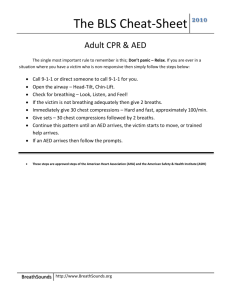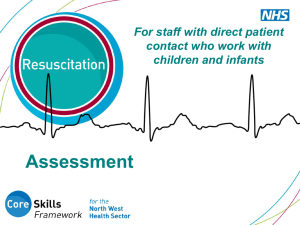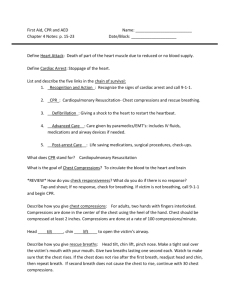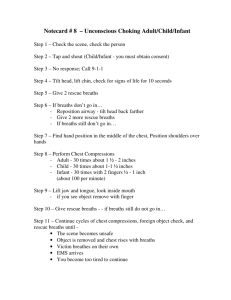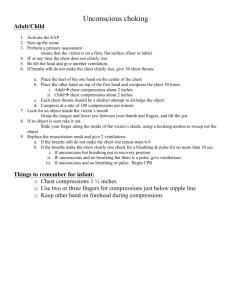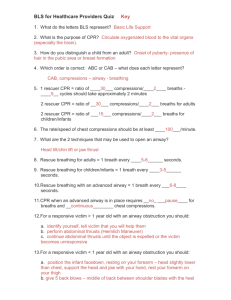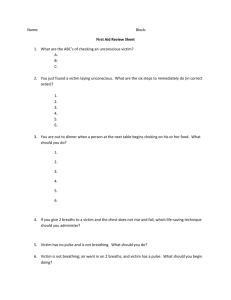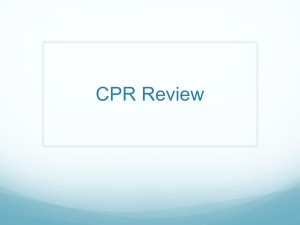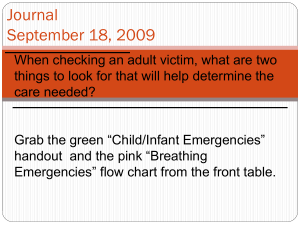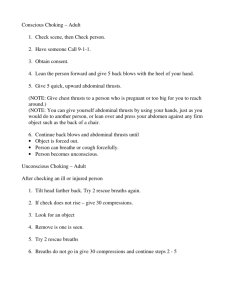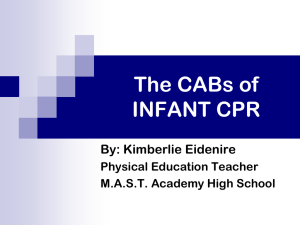Paediatric Basic Life Support Assessment
advertisement
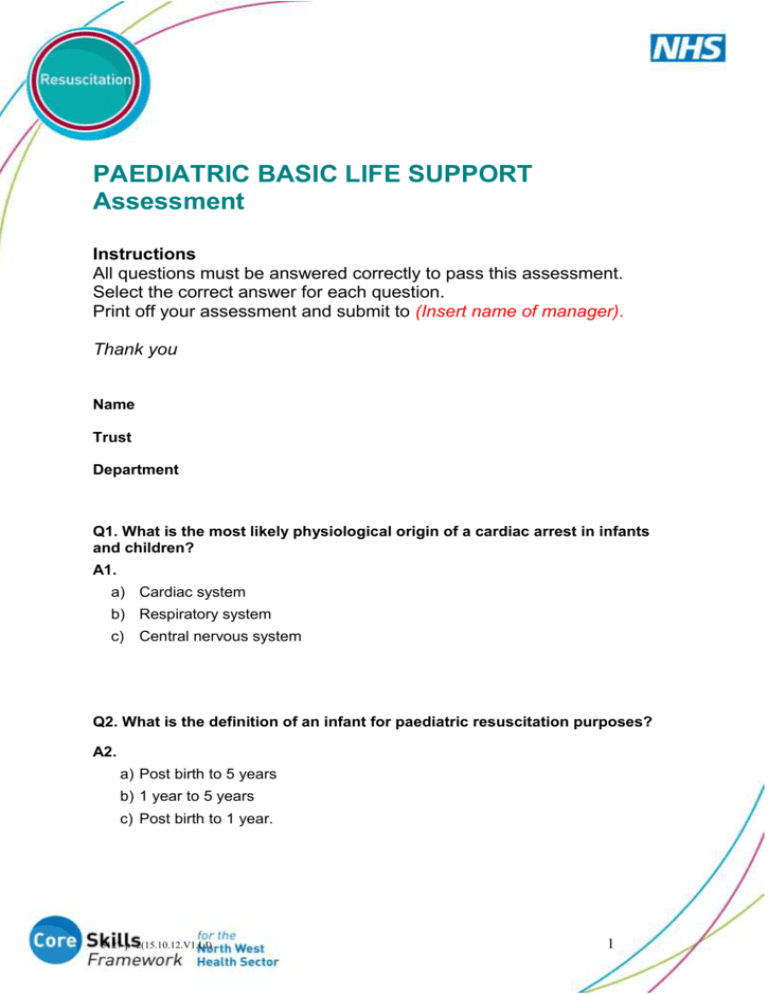
PAEDIATRIC BASIC LIFE SUPPORT Assessment Instructions All questions must be answered correctly to pass this assessment. Select the correct answer for each question. Print off your assessment and submit to (Insert name of manager). Thank you Name Trust Department Q1. What is the most likely physiological origin of a cardiac arrest in infants and children? A1. a) Cardiac system b) Respiratory system c) Central nervous system Q2. What is the definition of an infant for paediatric resuscitation purposes? A2. a) Post birth to 5 years b) 1 year to 5 years c) Post birth to 1 year. 5127-p~2(15.10.12.V1.LJ) 1 Q3. Which of the following is the recommended technique for opening a child victim’s airway during basic life support? A3. a) Jaw thrust b) Head tilt, chin lift Q4. Why is it particularly important to only very gently stimulate infants and children who have collapsed to check their response? A4. Tick the correct answer(s) a) You might frighten them b) They may have a cervical spine injury c) Shaking infants and small children can cause brain injury Q5. How long should you take to check if a collapsed infant or child is breathing normally? A5. a) As long as it takes b) 20 seconds c) No more than 10 seconds d) Don’t bother to check because it’s not important to check breathing in a collapsed child victim Q6. If you assess an infant or child and find they are not breathing should you give them 5 rescue breaths before assessing their circulation? A6. a) Yes b) No 5127-p~2(15.10.12.V1.LJ) 2 Q7. What depth should an infant or child’s chest be compressed to during cardiac compressions? A7. a) 1/2 of the depth of the chest b) 2cms c) At least 1/3 of the depth of the chest Q8. What is the recommended ratio of chest compression to rescue breaths in an infant or child victim? A8. a) 15 compressions + 2 breaths b) 20 compressions + 5 breaths c) 30 compressions + 2 breaths Q9. A collapsed child victim is not breathing normally. Which of the following should be considered when calling for help? A9. a) Ask someone else to call b) Use your mobile if you’re on your own c) Only leave the victim if there is no other option Q10. If an infant victim shows signs of severe airway obstruction and is conscious you should firstly give: A10. a) 5 chest thrusts b) 5 abdominal thrusts c) 5 back blows 5127-p~2(15.10.12.V1.LJ) 3 Date Signed Score 5127-p~2(15.10.12.V1.LJ) Pass/Fail 4
